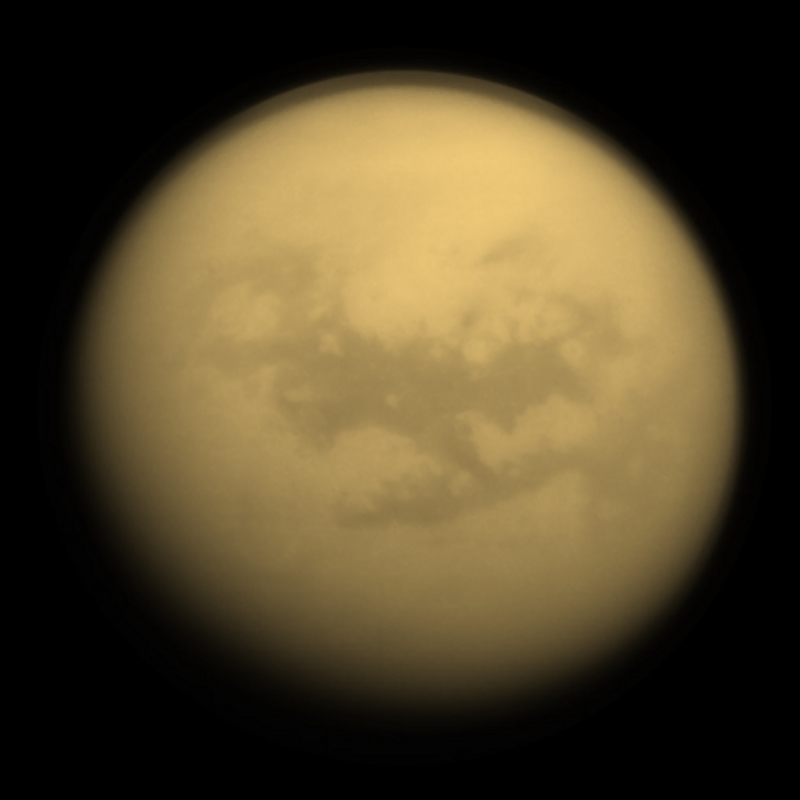Titan
Titan is the largest moon of Saturn and the second-largest natural satellite in the entire Sol system, as well as the only moon in the system with an appreciably dense atmosphere. Its geochemistry is unique in the Sol system: Titan has the volatile composition of cryonae and a sparse hydrological system of hydrocarbons and nitrogen; as such, it is the archetype of the chionae planetary class. An impressive 265 million people, mostly humans and Calypsians, live on this strange and cold world, with the primary hub of activity being the city of New Kathmandu.
Geography
Location
Titan is the largest and second-farthest major moon of the planet Saturn, which is the sixth planet from its sun Sol. It orbits at roughly 20 times its parent planet's radius, exceeded only by the major moon Iapetus. Its rotation is synchronized to its orbit, and thus one titanoid hemisphere (the Saturnbound face, or "near side") is constantly visible to Saturn while the other (the spacebound face, or "far side") is never visible. However, this does not matter too much, since Titan is blanketed by an opaque, dense atmosphere of nitrogen and vaporous hydrocarbons that give this world's sky an intense golden-yellow hue.Surface
The internal structure of Titan is the strangest of any planetoid in the system: the icy, pseudo-tectonic crust of the moon drifts atop a mantle-like sea. Titan's surface is marked by broad regions of bright and dark terrain, including Xanadu Terra: a large region about the size of Earth's continent Australia with a high albedo. Xanadu is filled with hills and cut by river valleys; indeed, most of the satellite's equator (especially the deeply crevassed Shangri-La Terra) is eroded by Titan's unusual hydrocarbon solvent cycle. The poles of this hazy world are saturated by large seas and lakes of liquid methane and ethane.Ecosystem
Titan's cold hydrocarbon lakes are under extensive scientific study due to the complex chemistry that occurs within them. One of the leading models for explaining this system of chemistry is complex prebiotic chemistry that may qualify as protocellular life, but this has yet to be fully understood or confirmed.Geopolitics
The Titan Harmony Organization –sometimes referred to by the name of the treaty that formed it, the Titan Compact– is a collaborative organization operated by both humans and Calypsians that oversees and manages the habitation of this cold, exotic moon. This makes Titan one of the only celestial bodies that is cohabited by Calypsians and any of the oxygenic sophont species, and the THO's membership in the Saturn Alliance (and by proxy the United Nations of Sol) gives the Calypsians a voice in the happenings of the Sol system.Archive Data
HAZARDS
- 95.0% nitrogen
- 4.9% methane
- 0.1% other gases
The information presented here is based on scientifically contested information and not universally acknowledged.
Life
Organic protocellular
Biome(s)
marine
Origin
Abiogenesis
Genesis group
Titangenia
ERPA Biosecurity Rating
LOW






Comments